Basics of Wind Energy for Beginners: Science & Innovation
Category: Renewable Energy
Understanding Wind Energy: A Beginner's Guide with Depth for Engineers
If you're a curious beginner eager to grasp how wind energy works, or an electrical engineer seeking a clear, in-depth exploration of this clean power source, you've landed in the right place. Wind energy isn't just about giant turbines spinning in fields—it's a fascinating interplay of physics, engineering advancements, and innovative technologies driving a sustainable future. This post unpacks the science behind wind energy from the blade to the grid, delivered in an accessible yet technically sound manner.
Many newcomers struggle with understanding how wind converts to electricity efficiently, while engineers look for updated knowledge on design innovations and performance optimization. You may have arrived here after searching for reliable explanations that combine the basics with fresh insights on wind technology, especially how renewable energy integrates with modern power systems. Unlike typical oversimplified overviews, this guide balances technical accuracy with beginner-friendly clarity.
Read on to explore sections covering wind formation, turbine mechanics, types of wind turbines, energy conversion principles, siting and resource assessment, and modern innovations in wind power. Whether you're aiming to deepen your technical understanding or just starting your renewable energy journey, this post equips you with essential concepts and current trends—all backed by scientific principles and real-world applications.
- Understanding Wind Energy: A Beginner's Guide with Depth for Engineers
- What is Wind Energy? An Introduction to Wind as a Renewable Resource
- How Wind Turbines Work: Basic Components and Functionality
- Types of Wind Turbines: Horizontal vs Vertical Axis
- Wind Power Generation Principles: From Kinetic Energy to Electricity
- Assessing Wind Resources: Measuring and Mapping Wind Potential
- Wind Energy Conversion Systems and Grid Integration: Power Electronics, Inverters, and Connection Challenges
- Environmental and Economic Benefits of Wind Energy
- Challenges and Limitations in Wind Energy Development
- Innovation and Future Trends in Wind Energy Technology
- Basic Maintenance and Safety Considerations for Wind Turbines: Ensuring Operational Reliability and Technician Safety
What is Wind Energy? An Introduction to Wind as a Renewable Resource
Wind energy harnesses the natural movement of air in Earth’s atmosphere to generate electricity, making it one of the cleanest and most abundant renewable energy sources available today. The origin of wind lies in the uneven heating of the Earth’s surface by the sun, which creates temperature and pressure differences across regions. As air moves from high-pressure to low-pressure areas, it forms wind currents driven by complex atmospheric dynamics, including the rotation of the Earth (the Coriolis effect) and local geographic features.
This continuous flow of air carries kinetic energy, which modern wind turbines capture by converting the mechanical motion of blades into electrical power. Unlike fossil fuels, wind energy produces zero greenhouse gas emissions during operation and uses no water resources, positioning it as a cornerstone for sustainable power generation globally. Its role extends beyond electricity production; wind energy drives innovation in grid integration, energy storage, and hybrid renewable systems to address variability and enhance energy security. By understanding wind’s natural origins and energy potential, both beginners and engineers can appreciate why wind power is vital in the transition to a low-carbon energy future.
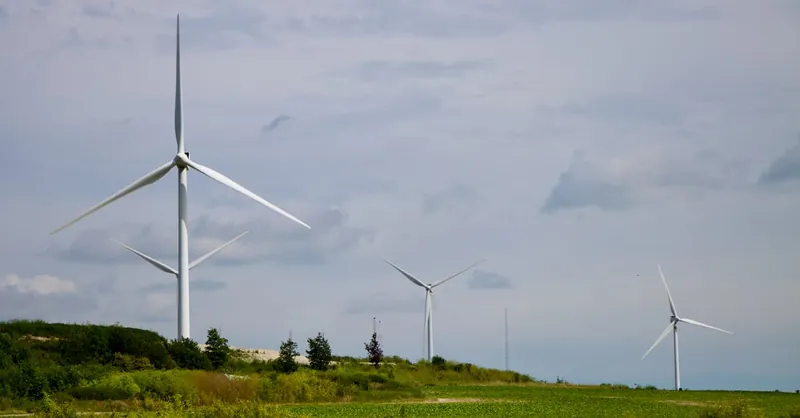
Image courtesy of Eclipse Chasers
How Wind Turbines Work: Basic Components and Functionality
Understanding the core components of a wind turbine is essential for grasping how wind energy is efficiently converted into electrical power. At its heart, a modern wind turbine consists of several key mechanical and electrical parts designed to work together seamlessly to capture wind's kinetic energy and transform it into usable electricity.
1. Blades and Rotor
The blades are the most visible and critical parts of a wind turbine. Typically made from lightweight composite materials like fiberglass or carbon fiber, blades are aerodynamically shaped to harness wind energy with minimal drag. When wind flows over the blades, it generates lift—similar to an airplane wing—which causes the blades to spin. Connected to the blades is the rotor, a hub that holds the blades and transfers their rotational energy downstream. Rotor diameter directly influences the turbine’s capacity because the energy captured depends on the swept area covered by the blades.
2. Nacelle and Generator
Sitting atop the tower, the nacelle houses the turbine’s key mechanical and electrical components to ensure smooth energy conversion. Inside the nacelle, a shaft connects the rotor to a gearbox (in many designs). The gearbox steps up the slow rotation of the blades into higher speeds required by the generator. The generator, often a synchronous or asynchronous type, converts the mechanical rotation into electrical energy using electromagnetic induction. Some modern turbines use direct-drive systems that omit the gearbox, reducing mechanical complexity and maintenance needs.
3. Tower
The tower supports the nacelle and blades at a height where wind speeds are optimal and relatively steady—usually between 80 to 120 meters or more. Taller towers expose blades to faster, less turbulent winds, significantly boosting energy output. Towers are constructed from steel or concrete and engineered to withstand various stresses, including wind loads and the weight of the components above.
By combining these components — aerodynamically optimized blades, a robust rotor, an efficient nacelle with a generator, and a sturdy tower — wind turbines efficiently convert natural wind flows into clean, renewable electricity. This synergy of mechanical design and electrical engineering represents a cornerstone of modern renewable energy technology, blending physics with innovation to shape the sustainable power systems of tomorrow.
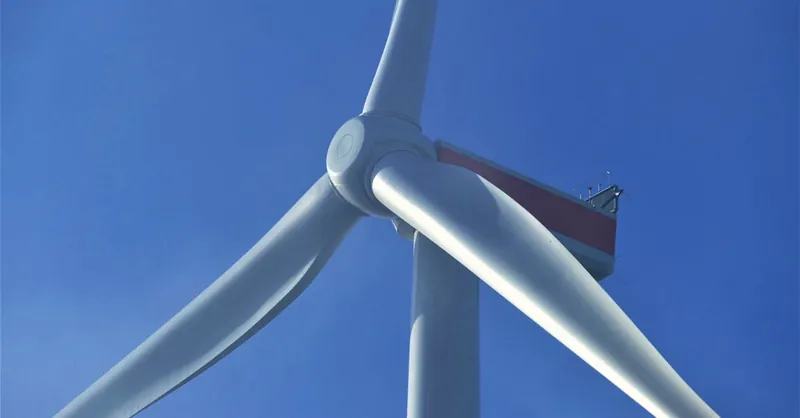
Image courtesy of Ivo Matijevic
Types of Wind Turbines: Horizontal vs Vertical Axis
Wind turbines primarily come in two fundamental designs based on the orientation of their rotating shaft: Horizontal Axis Wind Turbines (HAWTs) and Vertical Axis Wind Turbines (VAWTs). Each type offers distinct design characteristics, operational advantages, and typical applications, making understanding their differences essential for both renewable energy beginners and practicing engineers.
Horizontal Axis Wind Turbines (HAWTs)
The most common and widely recognized type, HAWTs, feature a horizontal shaft with blades rotating perpendicular to the wind direction. These turbines resemble traditional windmills, with blades mounted on a tall tower and facing the wind to maximize exposure.
Advantages of HAWTs include:
- Higher Efficiency: Due to optimized aerodynamic blade designs and ability to yaw (rotate) towards wind direction, HAWTs can capture stronger, steadier winds at greater heights, generating more electricity.
- Mature Technology: Decades of R&D have led to highly refined systems featuring variable pitch blades, direct-drive generators, and advanced control strategies.
- Large-scale Applications: HAWTs are preferred for commercial onshore and offshore wind farms where maximizing power output is critical.
However, HAWTs require complex yaw mechanisms to orient the blades into the wind and taller towers that can increase installation costs.
Vertical Axis Wind Turbines (VAWTs)
VAWTs rotate around a vertical shaft, allowing blades to capture wind from any direction without needing to reorient. Common VAWT designs include the Darrieus (eggbeater-shaped) and Savonius (drag-based scoops) turbines.
Key advantages of VAWTs:
- Omni-directional Operation: They do not need yaw systems, simplifying the design and reducing mechanical complexity.
- Lower Installation Height: VAWTs can operate closer to the ground or on rooftops, benefiting urban or complex terrain environments.
- Reduced Noise and Visual Impact: Their compact, lower-profile design often results in quieter operation and less visual intrusion.
On the downside, VAWT efficiency tends to be lower than HAWTs because of aerodynamic losses and cyclic stress on the blades, limiting their use in large-scale power generation. They are typically applied in small-scale installations, urban environments, or experimental renewable setups where site constraints prevent traditional turbine deployment.
| Feature | Horizontal Axis Wind Turbines (HAWTs) | Vertical Axis Wind Turbines (VAWTs) |
|---|---|---|
| Rotor Orientation | Horizontal (parallel to ground) | Vertical (perpendicular to ground) |
| Wind Directionality | Needs to face into the wind (yaw mechanism required) | Omnidirectional, no yaw system needed |
| Typical Tower Height | Tall towers (80-120+ meters) | Shorter or ground-mounted |
| Efficiency | Generally higher due to aerodynamic design | Lower due to drag and cyclic blade loading |
| Maintenance | More complex due to yaw system and gearbox | Simpler mechanics, easier maintenance |
| Common Applications | Utility-scale wind farms (onshore/offshore) | Urban areas, small-scale power generation, niche uses |
Understanding these fundamental differences between horizontal and vertical axis wind turbines helps guide selection based on specific site conditions, power requirements, and environmental constraints. For engineers, keeping abreast of both types’ innovations ensures optimized wind energy solutions tailored to a growing range of renewable energy applications.
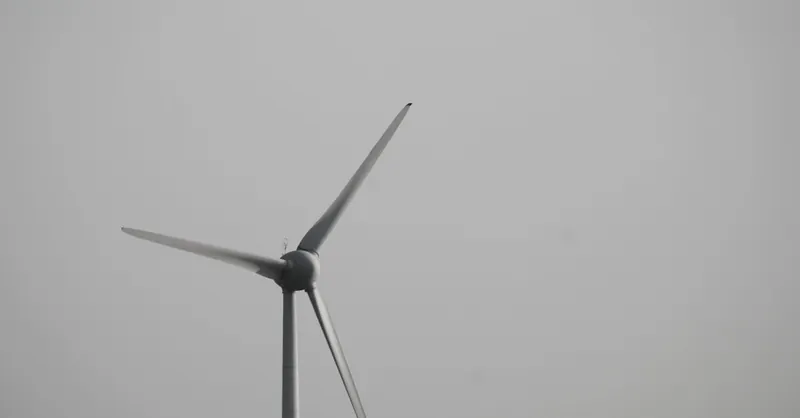
Image courtesy of Mahesh Aravinth Saravanan Photography
Wind Power Generation Principles: From Kinetic Energy to Electricity
At the heart of wind energy conversion lies the transformation of wind's kinetic energy into electrical power, governed by fundamental physics principles and engineering innovations. The amount of power that a wind turbine can generate depends primarily on the wind speed, the swept area of the blades, and the turbine’s aerodynamic efficiency.
The Physics of Wind Energy
Wind contains kinetic energy because air molecules are in motion, and this energy can be quantified using the equation:
[ P = \frac{1}{2} \rho A v^3 ]
where:
- (P) = power available in the wind (watts)
- (\rho) = air density (kg/m³)
- (A) = swept area of the rotor blades ((m^2))
- (v) = wind speed (m/s)
This formula highlights that power output varies with the cube of wind speed, making even small increases in wind velocity dramatically boost energy potential. Similarly, increasing the rotor diameter enlarges the swept area, thereby capturing more wind energy.
Power Curves and Turbine Performance
Each wind turbine model has a characteristic power curve that relates wind speed to electrical output, illustrating operational limits such as:
- Cut-in Wind Speed: The minimum wind speed (typically 3–4 m/s) at which the turbine starts producing usable power.
- Rated Wind Speed: The wind speed (commonly 12–15 m/s) at which the turbine reaches its maximum, or rated, power output.
- Cut-out Wind Speed: The wind speed (around 25 m/s or higher) beyond which the turbine shuts down to avoid mechanical damage.
Understanding the power curve helps engineers optimize siting and grid integration by predicting realistic energy yields based on local wind profiles.
The Betz Limit: Theoretical Maximum Efficiency
A fundamental concept in wind energy is the Betz limit, established by German physicist Albert Betz in 1919. It states that no wind turbine can capture more than 59.3% of the kinetic energy in wind under ideal conditions. This limitation arises because slowing down the wind too much would prevent airflow from continuing through the rotor, restricting energy extraction.
Modern wind turbines typically achieve 40% to 50% efficiency, approaching this theoretical maximum through advanced blade designs, pitch control, and generator technologies.
By comprehending these core principles—from the cubic impact of wind speed to the constraints posed by the Betz limit—both beginners and engineers can appreciate the scientific challenges and innovations driving improvements in wind power generation efficiency. This foundation is critical for developing and deploying optimized wind technologies that maximize clean energy harvest in diverse environments.
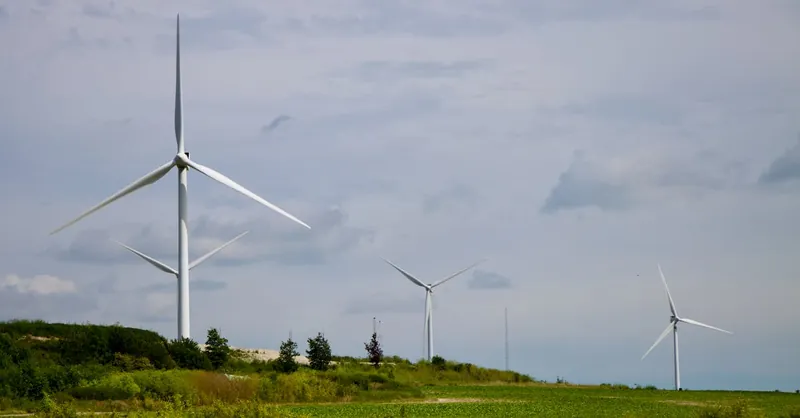
Image courtesy of Eclipse Chasers
Assessing Wind Resources: Measuring and Mapping Wind Potential
Accurate assessment of wind resources is a crucial step in identifying viable sites for wind energy projects. Before installing turbines, developers, engineers, and policymakers need reliable data on wind speed, direction, turbulence, and frequency at prospective locations to estimate energy yields and ensure economic feasibility. This process involves a combination of meteorological measurements, advanced modeling techniques, and geographic information systems (GIS) to create detailed wind resource maps.
Tools for Measuring Wind Potential
-
Anemometers and Wind Vanes
Ground-based instruments like cup anemometers measure wind speed, while wind vanes track wind direction. These sensors are typically installed on meteorological towers at varying heights (10 to 100 meters or more) to capture vertical wind profiles. Long-term data collection, often spanning one to three years, allows for statistically robust analysis of wind patterns and seasonal variability. -
Lidar and Sodar Technologies
Remote sensing devices such as Lidar (Light Detection and Ranging) and Sodar (Sonic Detection and Ranging) provide high-resolution wind measurements without the need for tall towers. Lidar uses laser pulses to detect wind velocity at different altitudes by measuring the Doppler shift of scattered light, while Sodar uses sound waves for similar profiling. These tools are especially valuable in complex terrain or offshore sites where erecting meteorological masts is challenging.
Methods for Mapping Wind Potential
-
Wind Resource Modeling and Simulation
Numerical models leverage atmospheric physics, historical weather data, and terrain parameters to predict wind patterns over large areas. Commonly used models include mesoscale atmospheric models combined with microscale flow models that consider local topography, land cover, and surface roughness. These simulations generate wind resource maps displaying average wind speeds, power density, and turbulence intensity, essential for site feasibility assessments. -
Geographic Information Systems (GIS)
GIS integrates multiple spatial datasets—such as elevation, land use, infrastructure, and environmental constraints—with wind measurements and model outputs. This facilitates the visualization and analysis of wind potential alongside logistical considerations, helping identify optimal turbine locations while minimizing environmental and social impacts.
Why Accurate Wind Resource Assessment Matters
- Maximizing Energy Production: Precise wind data ensures turbines are placed where wind speeds are sufficient and consistent to maximize electricity generation.
- Economic Viability: Understanding wind variability and extremes reduces financial risks by informing turbine selection, layout design, and power purchase agreements.
- Grid Integration: Forecasting wind patterns aids in managing variability and planning storage or complementary generation.
- Environmental and Regulatory Compliance: Detailed wind site assessments help mitigate impacts on wildlife and comply with permitting requirements.
By mastering wind measurement technologies and analytical methods, both beginners and engineers gain essential tools to evaluate wind energy potential rigorously. This foundational knowledge supports the design of efficient wind farms, accelerating the deployment of clean, renewable power worldwide.
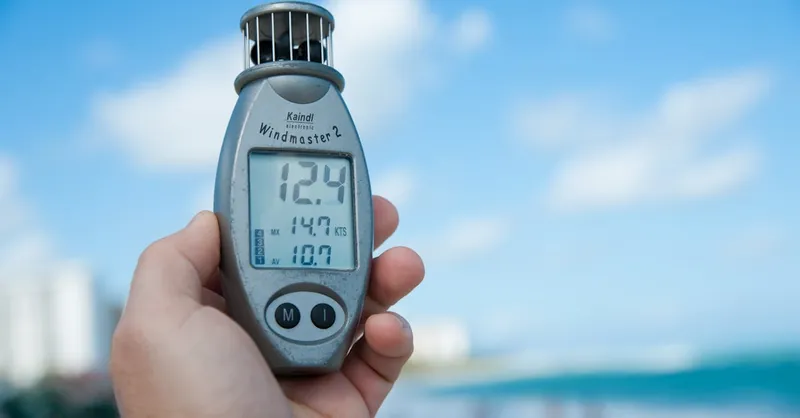
Image courtesy of mali maeder
Wind Energy Conversion Systems and Grid Integration: Power Electronics, Inverters, and Connection Challenges
Converting the mechanical energy captured by wind turbines into grid-compatible electrical power involves sophisticated wind energy conversion systems (WECS) centered around advanced power electronics and control technologies. At their core, WECS play a critical role in optimizing energy capture, ensuring power quality, and enabling seamless integration of variable wind generation into modern electrical grids.
Power Electronics and Inverters in Wind Turbines
Wind turbines generate variable-frequency alternating current (AC) due to fluctuating rotational speeds influenced by wind conditions. To produce electricity compatible with the fixed frequency and voltage standards of utility grids, turbines employ power electronic converters, primarily consisting of:
-
Rectifiers
These convert the variable-frequency AC from the turbine generator into direct current (DC), providing a stable intermediate stage for further processing. -
Inverters
Inverters transform the DC back into grid-synchronized AC with precise control over voltage, frequency, and phase angle. Modern grid-tied inverters with advanced control algorithms enable turbines to: - Maintain power factor correction and support reactive power demands.
- Provide fault ride-through capabilities during grid disturbances.
-
Smooth out fluctuations in power output by adjusting converter operation in real-time.
-
Converters for Variable-Speed Operation
Most contemporary wind turbines utilize full-scale converters or doubly fed induction generator (DFIG) systems, which allow variable rotor speeds for maximizing aerodynamic efficiency while delivering constant-frequency grid power.
Grid Connection Challenges and Solutions
Integrating large-scale wind power presents multiple challenges for power system stability and quality, requiring comprehensive solutions:
-
Voltage and Frequency Regulation:
Because wind power is inherently variable and intermittent, maintaining stable voltage and frequency at the point of interconnection demands fast-acting control systems integrated into the inverters and grid infrastructure. -
Harmonics and Power Quality:
Power electronic devices can introduce harmonics and electrical noise into the grid. Advanced filtering and compliance with grid codes ensure minimal disruption to other consumers and sensitive equipment. -
Grid Code Compliance:
Regulatory bodies enforce strict standards for fault ride-through, voltage support, and ramp rate limits. Wind farms must be equipped with sophisticated control strategies to meet these requirements and avoid penalties or disconnection. -
System Protection and Coordination:
Protection schemes must be adapted to recognize the dynamic behavior of wind generation, coordinating with traditional generation and accounting for bi-directional power flows in smart grids.
By leveraging cutting-edge power electronics, inverter technologies, and grid control strategies, wind energy conversion systems effectively address the complexities of linking variable renewable generation to power grids. This integration ensures reliable, high-quality electricity delivery that supports both utility operations and renewable energy expansion, making wind power a robust pillar of the evolving sustainable energy landscape.
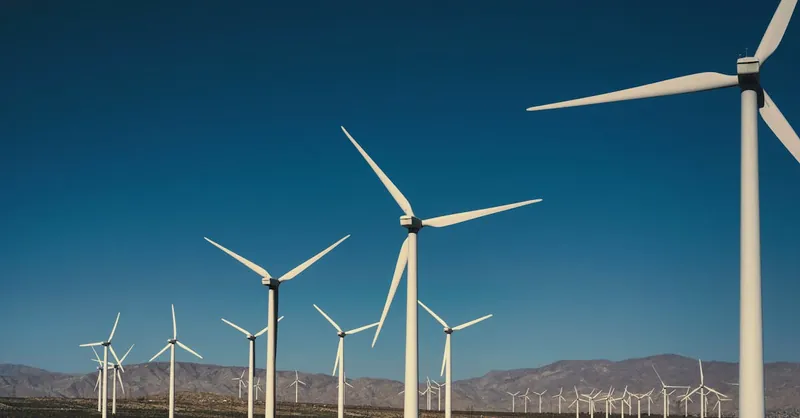
Image courtesy of Alfo Medeiros
Environmental and Economic Benefits of Wind Energy
Wind energy offers significant environmental advantages by drastically reducing greenhouse gas emissions and decreasing dependence on fossil fuels. Unlike coal or natural gas power plants, wind turbines generate electricity without emitting carbon dioxide (CO2), sulfur dioxide (SO2), nitrogen oxides (NOx), or particulate matter. This clean energy production plays a pivotal role in combating climate change and improving air quality, thus supporting public health and biodiversity conservation. Additionally, wind energy requires minimal water usage compared to conventional thermal power generation, making it a sustainable choice in regions facing water scarcity.
From an economic perspective, wind energy has experienced dramatic cost reductions over the past decade, making it one of the most competitive sources of electricity worldwide. The levelized cost of energy (LCOE) for wind power has fallen thanks to advancements in turbine design, larger rotor diameters, taller towers, and improved manufacturing processes. These innovations improve capacity factors and energy yields, driving down the cost per megawatt-hour (MWh).
Key Economic Trends and Community Impacts
-
Declining Costs and Financing Opportunities:
The global expansion of wind projects has benefited from economies of scale, competitive supply chains, and technological maturity, resulting in cost declines of up to 70% since 2010. Policy incentives, power purchase agreements (PPAs), and green financing mechanisms further enable project viability and investor confidence. -
Job Creation and Local Economic Growth:
Wind energy development stimulates employment in manufacturing, installation, operations, maintenance, and supply chain activities. Rural and remote communities hosting wind farms often experience increased tax revenues and infrastructure improvements, enhancing socioeconomic conditions. -
Energy Independence and Price Stability:
By harnessing a free and inexhaustible resource, regions reduce exposure to volatile fossil fuel markets and imported energy costs. This enhances energy security and provides consumers with more stable and predictable electricity prices in the long term.
In summary, wind energy not only delivers substantial environmental benefits by mitigating emissions and conserving natural resources but also drives economic growth through cost-effective electricity generation, job creation, and community development. These advantages ensure that wind power remains a cornerstone of sustainable energy strategies globally.

Image courtesy of Eclipse Chasers
Challenges and Limitations in Wind Energy Development
While wind energy is a cornerstone of sustainable power generation, it faces several challenges and limitations that impact its development and integration. Understanding these factors is crucial for both beginners and engineers aiming to optimize wind energy projects and mitigate potential drawbacks.
Intermittency and Variability
One of the primary challenges of wind energy is its intermittent and variable nature. Wind speeds fluctuate with weather patterns, seasons, and time of day, which leads to inconsistent power output. This variability complicates grid integration, demanding advanced forecasting methods, energy storage solutions, and flexible grid management to maintain a stable electricity supply. Addressing intermittency is essential for maximizing capacity utilization and ensuring that wind power can reliably complement other energy sources.
Noise and Visual Impact
Wind turbines generate mechanical and aerodynamic noise, which can be a concern for nearby communities. Although modern turbine designs have reduced noise levels significantly through optimized blade shapes and operational controls, noise pollution remains a limitation, especially for onshore installations close to residential areas. Additionally, the visual impact of large wind farms often raises public opposition due to concerns about landscape alteration and effects on tourism or local aesthetics. Careful site selection and community engagement are vital to balancing energy needs with social acceptance.
Wildlife and Environmental Concerns
Wind turbines can have adverse effects on wildlife, particularly birds and bats, through collision risks and habitat disruption. Certain locations with high migratory bird activity or sensitive ecosystems may experience increased mortality rates associated with turbine operations. Developers must conduct thorough environmental impact assessments and implement mitigation measures such as turbine curtailment during peak migration periods, radar detection systems, or wildlife-friendly siting strategies to minimize ecological harm.
Land Use and Resource Constraints
Large-scale wind farms require substantial land area to optimize turbine spacing and minimize wake effects, which can pose challenges in densely populated or geographically constrained regions. While offshore wind farms offer a solution by utilizing ocean space, they come with higher installation and maintenance costs. Land use conflicts may also arise due to competing agricultural, industrial, or conservation interests. Innovative turbine designs with smaller footprints, dual land-use strategies (e.g., combining farming and wind energy), and offshore development are important avenues to address land limitations.
By recognizing and addressing these key challenges—intermittency, noise, wildlife impact, and land use—stakeholders can enhance the sustainability and public acceptance of wind energy projects. Continuous innovation and comprehensive planning remain critical to overcoming these barriers as wind power scales globally.
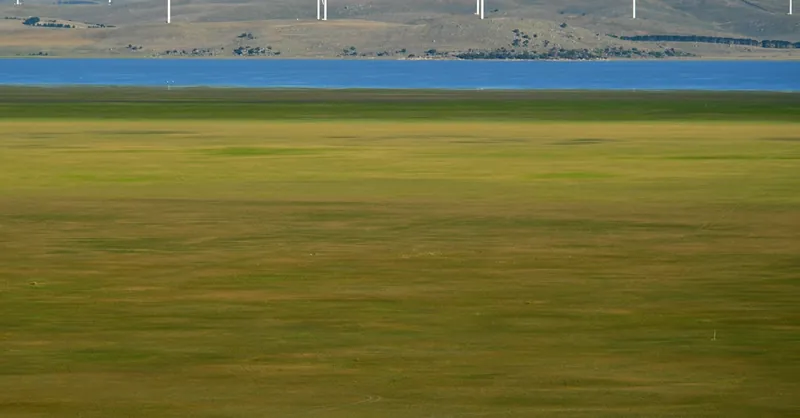
Image courtesy of Chen Te
Innovation and Future Trends in Wind Energy Technology
The wind energy sector is rapidly evolving, driven by technological innovations that enhance efficiency, reduce costs, and expand deployment opportunities. Recent advancements focus on overcoming traditional challenges such as site limitations, variable wind conditions, and grid integration complexities. Key cutting-edge developments reshaping the future landscape of wind power include offshore wind farms, floating wind turbines, and smart control systems.
Offshore Wind and Floating Turbines
Offshore wind energy has gained immense traction due to higher and more consistent wind speeds over oceans, which translate to greater capacity factors and more predictable power output compared to onshore sites. Technological progress in turbine scale and durability enables the construction of massive offshore turbines reaching 15 megawatts (MW) or more, significantly boosting per-unit energy harvest.
However, traditional fixed-bottom offshore turbines face limitations in water depth and seabed conditions. This challenge has spurred the development of floating wind turbines, which rest on buoyant platforms anchored to the seabed by mooring lines. Floating turbines unlock vast deep-water areas previously inaccessible, notably expanding the global wind resource base.
Advantages of floating wind technology include:
- Access to stronger, steadier winds far offshore, improving reliability and output.
- Reduced environmental and visual impact, as installations are located far from shorelines.
- Modular and scalable deployment, enabling easier installation and maintenance in challenging marine environments.
Smart Controls and Digitalization
Advances in digital technologies, sensors, and artificial intelligence (AI) are transforming wind turbine operation and maintenance, driving higher efficiency and lower downtime. Smart control systems leverage real-time data from turbine components and environmental sensors to optimize blade pitch, yaw alignment, and generator load dynamically.
Key features of these intelligent systems include:
- Predictive maintenance algorithms that forecast component failures before breakdowns, minimizing costly repairs and turbine downtime.
- Adaptive power curve optimization to maximize energy capture under varying wind and grid conditions.
- Grid-friendly controls that enable turbines to provide ancillary services such as frequency regulation and reactive power support, aiding grid stability.
Combined with advanced IoT (Internet of Things) connectivity and edge computing, these innovations enable wind farms to operate as smart, autonomous energy assets that integrate seamlessly into modern power grids.
Emerging Trends Enhancing Wind Energy Future
- Larger rotor diameters and taller towers, pushing aerodynamic and structural limits to maximize energy extraction.
- Hybrid systems combining wind and solar or energy storage to mitigate intermittency and smooth power delivery.
- Advanced materials, including lightweight composites and corrosion-resistant coatings, extending turbine lifespan and performance.
By embracing these technological breakthroughs, the wind industry is poised to accelerate renewable energy adoption globally, increase its competitiveness, and play an indispensable role in achieving a sustainable, low-carbon future. For both beginners and engineers, understanding these innovation trends is key to appreciating the dynamic nature of wind energy technology and its expanding potential.
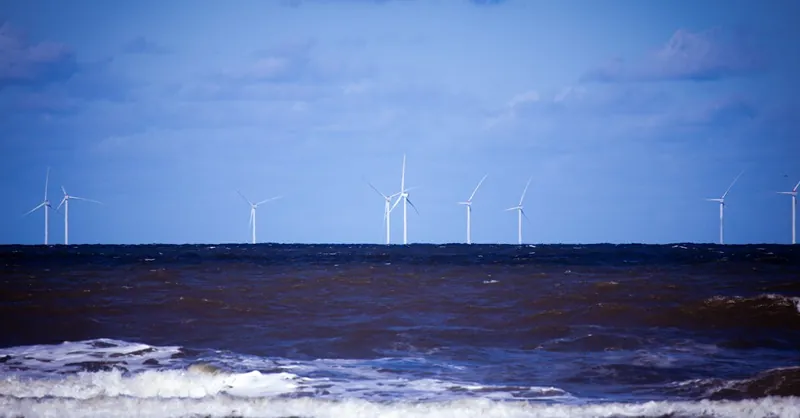
Image courtesy of Patrick
Basic Maintenance and Safety Considerations for Wind Turbines: Ensuring Operational Reliability and Technician Safety
Effective maintenance practices and stringent safety protocols are essential to guarantee the operational reliability and longevity of wind turbines while protecting the lives of technicians working at often challenging heights and conditions. Regular preventive maintenance helps minimize downtime, optimize performance, and extend the turbine's service life, making wind energy projects economically viable and sustainable.
Key Maintenance Activities for Wind Turbines
-
Routine Inspections:
Periodic visual and technical inspections focus on critical components such as blades, rotor hubs, gearboxes, generators, and towers to detect early signs of wear, corrosion, or damage. Regular blade inspections include checking for cracks, erosion, or lightning strike impacts. -
Lubrication and Mechanical Checks:
Proper lubrication of moving parts like bearings and gearboxes reduces friction and prevents premature failures. Torque checks on bolts and structural joints are essential to maintain mechanical integrity under cyclic loading from wind forces. -
Electrical System Testing:
Inspection of electrical connections, transformer performance, control systems, and power electronics ensures consistent power quality and prevents unexpected outages. -
Predictive Maintenance Using Condition Monitoring:
Integration of sensors and smart diagnostic tools enables real-time monitoring of vibration, temperature, and acoustic emissions, facilitating early fault detection and condition-based maintenance. This approach reduces costly unplanned repairs and improves turbine availability.
Safety Protocols and Best Practices for Technicians
-
Fall Protection and Working at Heights:
Wind turbine technicians must follow strict fall arrest systems, harness protocols, and emergency rescue plans due to the elevated work environment on towers reaching 100 meters or more. -
Lockout-Tagout (LOTO) Procedures:
Ensuring turbines are safely de-energized and locked out during maintenance prevents accidental startup and electrical hazards. -
Weather Condition Awareness:
Maintenance activities are scheduled considering wind speeds, lightning risk, and temperature to ensure safe working environments and reduce accident risks. -
Comprehensive Training and Certification:
Technicians undergo rigorous training in turbine mechanics, electrical systems, confined space entry, and emergency response to maintain high safety standards and operational competence.
By emphasizing regular, proactive maintenance and rigorous safety measures, wind farm operators optimize turbine performance, reduce lifecycle costs, and safeguard personnel. These foundational practices not only maintain wind energy's cost-effectiveness but also uphold the industry's commitment to safe and sustainable renewable power generation.

Image courtesy of Los Muertos Crew
